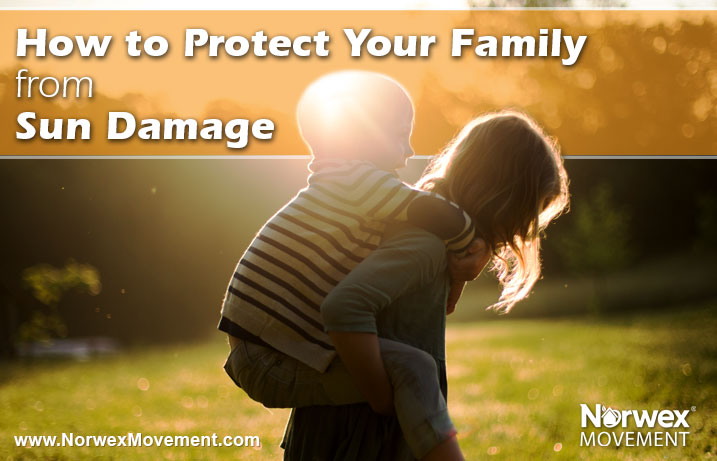

Even though summer is still a few months away, today I want to stress the importance of sun protection for keeping our families safe. And really, there’s no better time than right now to discuss it, because the sun can do damage even on a snowy or cloudy day.
In fact, just minutes of exposure can lead to sunburn no matter what the weather is like. That’s why it’s so important to adopt good (yes, daily) habits of sun protection for you and your family.
Did you know that more cases of skin cancer are diagnosed each year in the U.S. than all other kinds of cancers combined? In fact, one in every three cancers diagnosed worldwide is a cancer of the skin. And this problem is getting worse. According to skincancer.org:
While statistics like these are scary, knowledge is power. And when we realize that the number-one cause of most skin cancer is overexposure to the sun, we’re more likely to protect ourselves. According to skincancer.org:
That’s why it’s so important to wear protective clothing every single time you go outside. And for those areas of your body that remain uncovered, be sure to apply a sunscreen every day.
With all the available options for sun protection, it can get little overwhelming. But understanding a few basics can help you make the right choice for you and your family.
The sun produces two kinds of rays—UVA and UVB—which damage your skin in multiple ways. To get the most protection, look for “Broad Spectrum” or “Full Spectrum,” on the product label. These block both kinds of rays.
Note: UVA rays are constantly present (even on cloudy days) and can penetrate skin layers, clothing and even glass. If you’re outdoors at all, even just driving the kids to school, you should be wearing a sunscreen (and so should they).
SPF is really a measure of time. A product’s SPF rating indicates how long you can be in the sun without burning while wearing that sunscreen, compared with how long you can be in the sun before burning without wearing it. For example, if you typically burn in 15 minutes without sunscreen and you apply an SPF 10, it will take 10 times longer for you to burn, or 2.5 hours, IF you apply enough sunscreen.
According to skincancer.org, regular daily use of an SPF 15 or higher sunscreen reduces the risk of developing both melanoma and squamous cell carcinoma by 50% and 40%, respectively. Studies show that sunscreen with SPF 30 blocks 97% of the sun’s rays. A higher SPF number offers only miniscule gains.
This is important. You should use about an ounce on your body and a teaspoon on your face every time you apply. Apply generously and often—every 40 to 80 minutes, especially if you’re in the water and/or sweating. Remember to cover all exposed areas, including your hands, feet, ears, neck and chest.
What your sunscreen is made of is also important. Most sun-blocking products fall into one of two categories: chemical or physical.
Teaching your family sun safety will not only help to protect them from skin cancer but will also stall the aging effects of the sun. They may not thank you now, but they’re sure to thank you later!
Sunscreens can impact the environment in unexpected ways.
Resources:
Good article.
Glad I read this!
Thanks for sharing this information!!! Its so true! Year round and safe earth friendly are equally important!
When my girls were school aged we lived in an apartment with a pool. It was their responsibility to not get a sunburn. If one of them “forgot” the sunscreen or stayed out too long she lost pool privileges for a day or two. Of course I helped apply it where they couldn’t reach and always had it available. I was working sometimes and couldn’t always monitor them so It had be their responsibility. They knew the dangers and the consequences of sunburn and the importance of avoiding it. Staying inside also gave it time to heal and well as letting them know that their decisions have consequences. For younger children stand firm that they do not go outside until you apply it.
My girls had no choice about using sunscreen. They knew the rules. No sunscreen No pool. If they got a sunburn they lost pool time. ( We lived in an apartment complex with a pool.) “I forgot” was not an excuse. We are of Irish and Scottish descent so we have to be especially careful. When it comes to a child’s health and safety sometimes a parent has to make the rules and be firm.